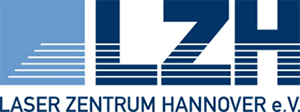CHALLENGE
Laser beam welding of critical parts needs process-monitoring and control to ensure 100% quality of the joints. For applications such as the production of pressure sensor glow plugs, joint quality can only be assessed by metallographic analyses which would require the destruction of the part. To ensure constant properties for all parts, the monitoring system needs to identify all process deviations by type and location. As such, the structure borne sound system of the assessment partner QASS needs to be closely integrated with the production equipment and the signal analysis needs to unambiguously map acoustic patterns to events in the welding process. The mastering of this challenge will be validated on real parts at the HIDRIA manufacturing plant.
BENEFIT
Once the structure borne sound detection system of QASS is integrated into the production equipment of HIDRIA, experiments can be conducted to map the acquired signals to welding defects. The development of suitable algorithms will enable to characterize not only the sound sensor and welding defects but also create additional knowledge on how to apply the sensor for the actual manufacturing task. By principle, structure borne sound propagates differently in hard and ductile materials. In combination of the high scanning rate of 100MHz and the capability to process the data online, the WEDEBS system will be capable to detect deviations of the welding process in real-time. This benefits manufacturing quality control and might even enable process control.
Once the WEDEBS system has demonstrated its capabilities, it can be transferred to other laser-based manufacturing processes such as laser cladding or laser cutting.
ACHIEVEMENT
WEDEBS achieved a new level of quality diagnostics for welding of pressure sensor glow plugs. The laser based welding process is monitored with a new solution that is based on a “Optimiser 4D” system from QASS which has been specifically adapted for the quality monitoring task. Fully integrated in the machine setup, the system monitors structure-borne vibrations and processes these in a dedicated analysis unit. The system is fully synchronised with the numeric control unit to start and stop with the welding process. The analysis system calculates spectrograms from the recorded signals and analyses these for anomalies.
The final prototype is capable of signalling these conditions to adjacent handling systems so that defective welds can be excluded from the propagation through the manufacturing chain.
WEDEBS achieved an integrated quality monitoring system with full control of the products produced. The benefits for the partners drive a new application in manufacturing for the user and a new product for 100% quality monitoring for the supplier.
 Fraunhofer Institute for Laser Technology ILT
Fraunhofer Institute for Laser Technology ILT

